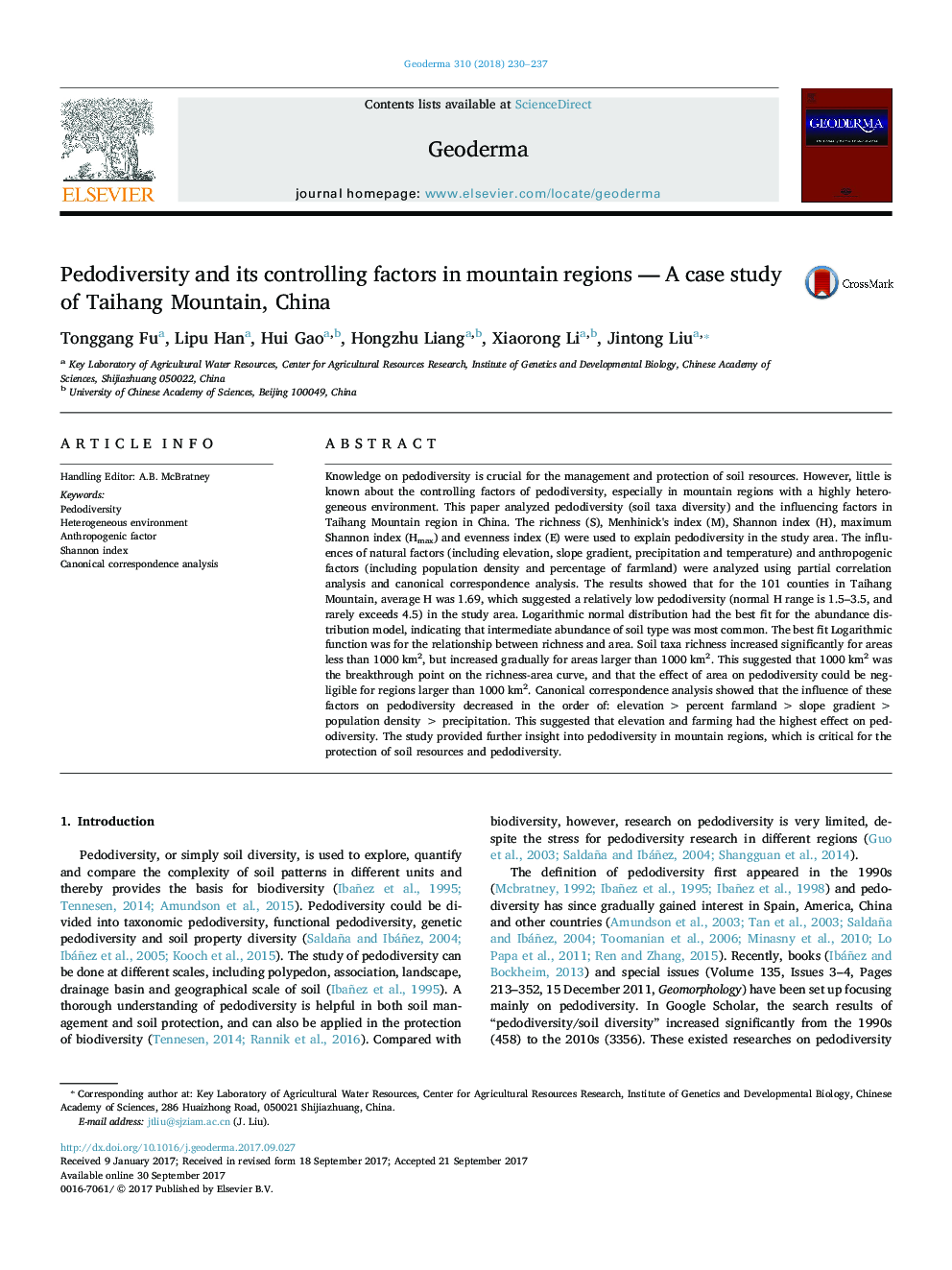| کد مقاله | کد نشریه | سال انتشار | مقاله انگلیسی | نسخه تمام متن |
|---|---|---|---|---|
| 5770377 | 1629407 | 2018 | 8 صفحه PDF | دانلود رایگان |

- 1000 km2 was the breakthrough point on the richness-area curve in Taihang mountain area.
- The variation of environmental factors play more important role than their mean values.
- Elevation and farming are the controlling factor of pedodiversity.
Knowledge on pedodiversity is crucial for the management and protection of soil resources. However, little is known about the controlling factors of pedodiversity, especially in mountain regions with a highly heterogeneous environment. This paper analyzed pedodiversity (soil taxa diversity) and the influencing factors in Taihang Mountain region in China. The richness (S), Menhinick's index (M), Shannon index (H), maximum Shannon index (Hmax) and evenness index (E) were used to explain pedodiversity in the study area. The influences of natural factors (including elevation, slope gradient, precipitation and temperature) and anthropogenic factors (including population density and percentage of farmland) were analyzed using partial correlation analysis and canonical correspondence analysis. The results showed that for the 101 counties in Taihang Mountain, average H was 1.69, which suggested a relatively low pedodiversity (normal H range is 1.5-3.5, and rarely exceeds 4.5) in the study area. Logarithmic normal distribution had the best fit for the abundance distribution model, indicating that intermediate abundance of soil type was most common. The best fit Logarithmic function was for the relationship between richness and area. Soil taxa richness increased significantly for areas less than 1000 km2, but increased gradually for areas larger than 1000 km2. This suggested that 1000 km2 was the breakthrough point on the richness-area curve, and that the effect of area on pedodiversity could be negligible for regions larger than 1000 km2. Canonical correspondence analysis showed that the influence of these factors on pedodiversity decreased in the order of: elevation > percent farmland > slope gradient > population density > precipitation. This suggested that elevation and farming had the highest effect on pedodiversity. The study provided further insight into pedodiversity in mountain regions, which is critical for the protection of soil resources and pedodiversity.
Journal: Geoderma - Volume 310, 15 January 2018, Pages 230-237